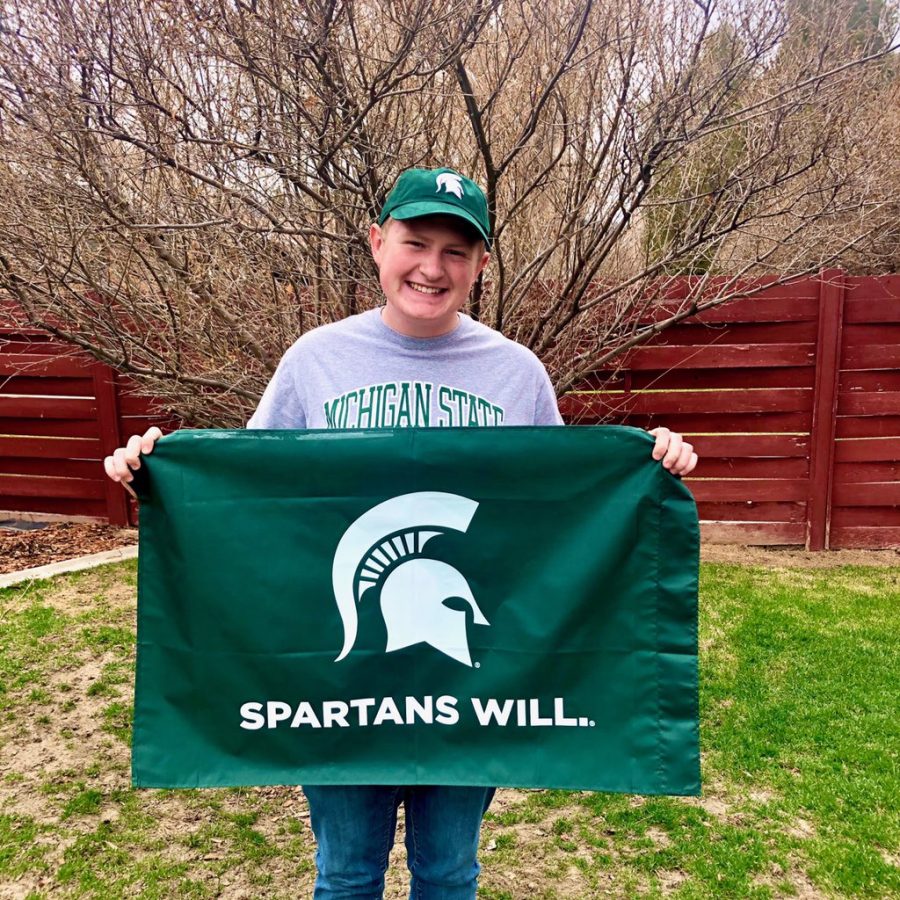College education costs stress students
Jonah Spicher applies to Olin College of Engineering in the summer before his senior year. The acceptance rate is only 8% so even getting an interview is a huge accomplishment. He gets his interview, and a spot in the class of 2021. Riddled with excitement, he is okay with taking out student loans to pay for $53,000 a year of tuition. As he ends his junior year he calculates that he can pay off his loans in ten years — if he makes $80,000 right out of college and if his girlfriend, Ashley, helps him. Millions of students in the US struggle with student loans and Jonah is one of them.
On average, the cost of a 4-year university in 2020 was $27,120 for state universities. Prospective college freshmen are thrown into the expensive and overwhelming world of student loans their junior and senior years of high school. ACT and SAT tests along with activities designed to boost a resume are the main focus of those students.
Andrew Brown, a senior at Kelly Walsh High School and a future freshman attending Michigan State University in fall of 2020 on the STARR scholarship — a prestigious scholarship for Wyoming and Upper Peninsula Michigan students said, “I knew I never wanted to stay at school here in Wyoming. I applied to about six schools and got a few scholarship offers before the STARR but none of them came close to covering the cost of even one year”.
Out – of – state tuition is more expensive than in-state for most students, which means that without hefty scholarship offers, they are forced to stay in – state. When asked if he considered taking out loans, Brown said, “With the way the system is made, it’s almost impossible not to take out loans. Not to mention they advertise them like crazy. Before I was awarded the STARR, I definitely considered it — it was the only way I could afford to go.”
Roughly 70% of American students take out loans to finance their college education. This contributes to the trillions of dollars in national student loan debt that is sure to harm the future economy and generations of Americans.
Some students, though, never considered loans. Rachelle Trujillo, a Kelly Walsh High School senior enrolled in Casper College. “I didn’t even consider going out-of-state. I knew that I couldn’t afford it and my parents weren’t in the position to help me pay for it. I chose Casper College because I don’t have to pay room and board. Hathaway helps most of my tuition, and they have way more scholarship opportunities — opportunities that not even the University of Wyoming had. I knew that I didn’t want to take out loans, so I had to adjust my dreams a bit,” Said Trujillo. For students like Rachelle who refuse loans and can’t afford 4 – year universities, community college is the only option right out of high school. On average, a Wyoming community college averages about $5,000 a year.
Ethan Spicher, another Kelly Walsh High School senior and future student at the University of Wyoming on the Trustee’s Scholarship said, “I thought that I would go to an out-of-state college because that’s what my brother did. I saw how much debt he had and decided that maybe staying at UW for free wasn’t the worst idea. Then I got the Trustee’s and it was a no brainer.”
Spicher, like Trujillo, did not have family that were in the position to help pay for college, so he knew it was loans or scholarships. Spicher, much like Brown, boasted a 90th percentile ACT score and a heavily padded college resume. For students of that caliber, full ride scholarships are more likely. Less-competitive applicants, while they may be only a few points behind with test scores, lose out the most.
Kathryn Johnson, a senior at Kelly Walsh and future University of Wyoming student, gets the “short end of the stick.” When college applicants first apply for college, they fill out FAFSA — a form calculating how much federal aid a student can qualify for. This form calculates your family’s EF, expected family contribution, and that number is used in colleges and scholarship applications to see which students qualify for need based scholarships. Johnson said, “I come from a middle class family, we’ve never really struggled with money. They have some money saved up for my college, but not enough to pay for all of it. I applied for dozens of scholarships and didn’t get any of them because I’m not need – based. I have a decent ACT score, but nothing stellar to get those merit – based ones. I kinda feel like I got screwed out of scholarships — it’s not anything like how I thought it would be.” Johnson also never considered loans, but had to shoot for a less-expensive college.
So how does a student balance the desire to reach for their biggest dreams while also maintaining their financial stability in a world where college education is getting increasingly expensive? Dave Ramsey, an expert financial advisor and author says, “Shop for a college like you would a car. Don’t get the newest, best model, most flashy. Get one that suits you and your needs and will provide you with the best value for the price.”
So, seeing that the average American household has $8,963 in their bank accounts at a time, and providing that they don’t take out loans, community colleges are their only options. To solve the student loan crisis, there needs to be a combination of financial education and policy change to lower the cost of college education. Students will make better financial decisions and colleges will be more affordable.







